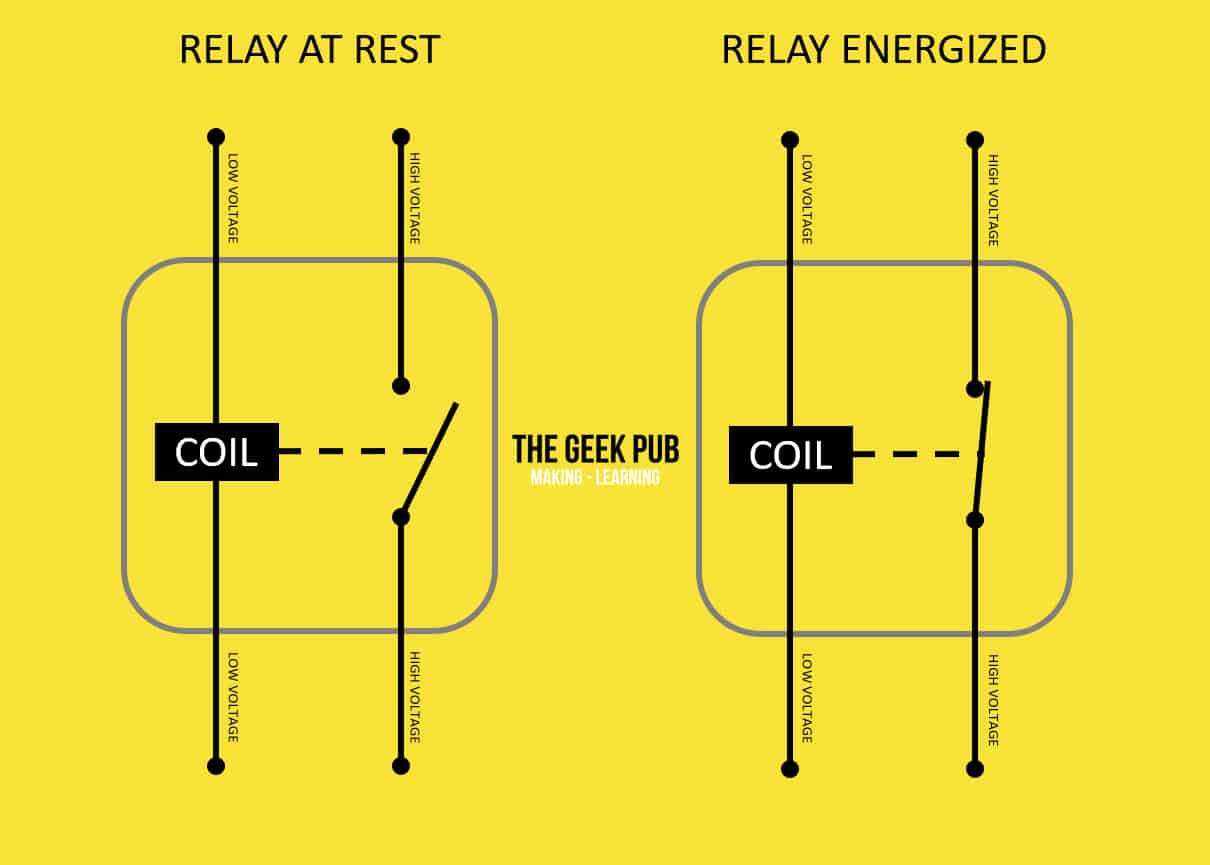Most orders for IN STOCK items placed by 12PM CST M-F ship SAME DAY. Orders for custom items and prints may take additional time to process.
Switches are literally everywhere! They are in many of the devices we use on a daily basis and a most basic part of just about every electronics project! So in this electronics basics tutorial we’re going to cover the different types of switches and what the applications that they are used for.
At its most basic, a switch turns something on or off. There’s a light switch for example in almost every room in your home. There is a switch to turn on or off your TV. There is even a switch to turn on and off your car or motorcycle! But switches are even more fundamental that turning your device on or off. What they actually do is close (allowing current to flow) or open a circuit (stopping the flow of current). This has many applications beyond the basic on/off function!
The buttons on your TV remote control that change the volume, channel, and inputs don’t turn on or off the remote or TV, but they do start or stop the flow of current, which tells the remote to do something by signalling an integrated circuit to transmit an IR code. In fact, we have a tutorial on building infrared circuits and a TV B-Gone remote!
Different types of switches have different categories. There are two main categories of switches you’ll run into. They are mechanical switches and electrical switches. Mechanical switches require physical operation by a human, animal, or even a mechanical device. Electrical switches are switches that are controlled as part of a circuit, such as a relay or transistor. Electrical switches may or may not be solid state (i.e. semiconductor based).
Let’s cover the basic types of mechanical switches. While there are hundreds of types of mechanical switches in operation and production throughout the world, for brevity we’re going to focus in on the main types you are likely to encounter.
Mechanical switches are usually described by a combination of two of their main characteristics: poles and throws.
Due to this, you’ll commonly see switches called by the number of poles and throws. Here are some common examples:
This illustration shows the difference between single-throw and double-throw (both single pole):
This illustration shows the difference between single-pole and double-pole (both single throw):
Let’s take a look at some very common examples of these combinations of poles and throws as they apply to different types of switches. The most common are single and double. However, there are switches with many more poles and/or many more throws.
A single-pole single-throw (SPST) is the most common type of switch you will encounter. It simply controls current flow of a single input. On or off. Nothing more.
A double-pole single-throw (DPST) type of switch is much like an SPST switch, but it controls two inputs separately. This is very handy when you have two separate devices that need to be controlled by a single switch. In an arcade cabinet you might need to turn off the 5 volt powered
A single-pole double-throw (SPDT) switch only controls a single input, but switches it between two outputs. This might allow you to switch between a red LED and and a green LED by flipping a switch. Neither receive power at the same time. A SPDT switch can replace a SPST switch by only connecting one of the two outputs.
There are of course many more combinations of the poles and throws. Here’s a handy illustration of some of the most common types:
As we continue to explore the different types of switches, another important distinction in switches you’ll encounter is the bias. Some switches maintain the state you set them in, until you physically change the state, this is called a latching switch (sometimes referred to as a maintained switch). A momentary switch on the other hand will only maintain its state while you are pressing it and return to its normal state when you release it. Momentary switches are generally activated by pressure (i.e. pushing the button on your arcade game), however, they could be activated by other means such as temperature, or light.
Now let’s go over the types of electrical switches. As we mentioned earlier, electrical switches are controlled by an electric change. They can be either electro-mechanical in design, or semiconductor based.
Relays are electro-mechanical types of switches. They usually consist of a coil that generates a magnetic charge when current travels through it. This magnetic charge either attracts or repels fixed type magnet that is connected to a mechanical switch. Relays are perfect for allowing low voltage devices to control high voltage circuits. For example, a 5 volt GPIO pin from an Arduino or
Of course, depending on the type of relay, it could be any combination of high-low/voltage-current! It could be 240 volts AC activating an LED!
RELATED: Arduino Relay Tutorial


Of course there many other types of electrical components that can be an electrical switch. Such as thyristors, silicon controlled rectifiers, and MOSFETs. Even a diode is a type of electrical switch when you think about it. When it is restricting current in its reverse direction it is acting as a switch!
If you have any questions, leave a comment below and we’ll do our best to help you out!
If you like our content maybe consider upgrading to Premium. You’ll get access to
7 Responses
5
You’re right! I never realized that some devices are actually just specialized types of switches!!!
5
What’s the difference between a latching and a maintained switch?
When I think of a latching switch I think of a push-button that clicks and locks down. You then press it again and it pops back up. Like a push-button power on/off switch. A maintained switch just means not momentary. So it stays in the new position until you actuate it again.
4.5
I have a broken button type switch in my squirrel proof birdfeeder that I am trying to replace. If I send a photo can you tell me the type of switch it is and where I can get a replacement?